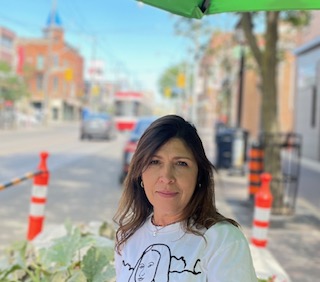Today’s suggested reading, which is often referred to as the Passion Narrative in John’s Gospel, is long. When we sat down to plan for this service, we decided to try to split it up, a bit, and to intersperse various parts of the reading with verses from hymns that have been written about the Passion, if for no other reason than to give all of us a bit more of a chance to keep all of the scenes, all of the locations, all of the characters a bit separate. There is a lot to take in and a lot to ponder, in this long and complex passage.
The passage moves us, as readers and observers of its contents, through a whole series of locations and scenes – from a trip with Jesus and the disciples across the Kidron Valley into the Garden of Gethsemane, and from there to an audience with Annas who, we are simply told, is the high priest Caiaphas’ father-in-law. As the discussions with Annas are taking place inside, the passage turns our attention to the conversations that Peter is having with various individuals outside, in which he repeatedly denies that he even knows Jesus. And then, it is off to Caiaphas, the high priest, and then into the judgement hall in Pilate’s headquarters. Pilate himself moves back and forth between his exchanges with Jesus and his interactions with the crowds outside. And then, finally, we watch as Jesus is condemned and led to the Place of the Skull, Golgotha, where he is executed.
It is a long text, and there is a lot that is going on in it – conversations and a kiss, questions and a trial, brutal tortures and terrible beatings.
And, finally, a death.
But for all of the details that the passage includes, what really drives it towards its ominous yet seeming inescapable conclusion are the characters that inhabit it. There are a lot of characters – Jesus and his disciples, soldiers, chief priests and religious officials, Pilate and his courtiers, the crowds, the onlookers at the cross.
And it is by pausing with, and sometimes focusing our attention, on the various members of this cast of characters that we usually discover the deepest meanings and the most profound opportunities for reflection. Consider, after all, how many of our common reflections on the dynamics that shape the passion narrative begin with an invitation to “see” ourselves in one of the characters, to consider the scene through their eyes.
Can we “see” ourselves in Judas, as he came to Jesus with such devious – and yet, perhaps in his own mind, perfectly rational and justified — intent?
Can we “see” ourselves in Peter, as we protest our devotion to Christ, yet pretend like we do not even know him if situations in life start to get uncomfortable?
Can we “see” ourselves in the religious and political officials, who seemed propelled by resentment, self-righteousness and jealousy, and choose their disastrously expedient desire to retain power over their responsibility to safeguard and defend truth and innocence?
Can we “see” ourselves in the frenzied crowds who scapegoat the condemned man, their collective rage leading them to brutal calls for his crucifixion?
Can we “see” ourselves in the dutiful soldiers who, instead of exercising any sense of moral conscience connected with their calling and vocation to defend peace and good order, are instead pictures playing cards to see who gets the clothes that have been stripped off of an almost dead man?
So many characters. So many opportunities for reflection. So many ways to “see” the story.
I am confident that this is not the first time that any of you have heard this passage. And I am confident that, at different times, there are different characters and different moments in it that seem to move to the forefront of your reflections and meditations. And if we were to read it again, or when any one of us reads it again at some point in the future, our minds will likely be drawn to other characters or other parts of the story than that which confronts us in today’s reading.
But what is intriguing for us to ponder is that it is the emotional dynamics that we discover within the characters, rather than the details of this story, that create the emotional and spiritual landscape that resonates with something deep within us, as readers. That is, it is the emotional landscape, rather than the geographical details of the text, that truly create the power of this story; it is the emotional landscape – the dynamics of betrayal and denial, of anger and jealousy, of resentment and fear – that shape our experience of this text. And the reason that they are so powerful is because we also know that these emotional dynamics are not unique to this story.
We need not be walking into the Garden of Gethsemane with Judas to know that terrible acts of betrayal can be rationalized and justified.
We need not be sitting beside Peter at that little pre-dawn fire to know that the temptation to deny our relationship with Christ is ever-present.
We need not be sitting with Caiaphas or Pilate to know that situations in life sometimes lure us to make terrible compromises and turn a blind eye to what is right, rather than risk the loss of power.
We need not be swept up in the crowds in the vicinity of Pilate’s headquarters to know that we can too easily be swayed by the pull and the power of public opinion, and into the menacing insanity of the mob.
The very reason that these stories continue to be read, through the centuries and the generations, and the very reason why they continue to resonate with us, is because the emotions that shape the words and actions of this cast of characters are every bit as much a part of our lives, today, as they were in the lives of those who we meet on the pages of this ancient book.
We can “see” this story through the eyes of so many of its characters because the experiences of those characters can help us to “see” ourselves in a different – and hopefully, more honest – light. Even if that light illumines dimensions of our humanity that we would prefer to refuse to acknowledge.
But what this passage ultimately invites us to do, however, goes beyond that cast of characters, and beyond our reflections on their motivations and emotions, and beyond the details of their stories, and even beyond the exposing light that is cast upon our own culpability and sin. Yes, those characters may be our ‘entry point’ into the story – but what this passage ultimately invites us to do – once we have found our way into the story, is to go beyond that level of attention and focus; and instead, to place our eyes, our minds, our hearts upon the character who rests at the heart of this passage.
We are invited to focus our attention on the One around whom the entire cast of characters, with all of their varied emotions and motivations swirl; the One who, in the end, is ultimately abandoned, alone, and lifted up from the earth while nailed to a brutal wooden cross.
Yes, the cast of characters reveals the breadth of human experience in this story; but the One who was nailed to the cross reveals something else.
And what that One character was about to reveal was something far greater than what that cast of characters could even begin to imagine.
Of course, as today’s reading ends, it does not seem to be going very well for that One lone character. He is crucified, he dies a horrific death, and his body is wrapped up and moved into a tomb. All of the horrible things that the gathered cast of characters had unleashed upon him — the betrayal, the denials, the abandonment, the fear, the resentment, the longing for power, the murderous demands, the violence, the brutality, the pain — seem to have prevailed.
He was dead. Hope was gone. Love had failed. Suffering and death had prevailed.
Or so they thought.






